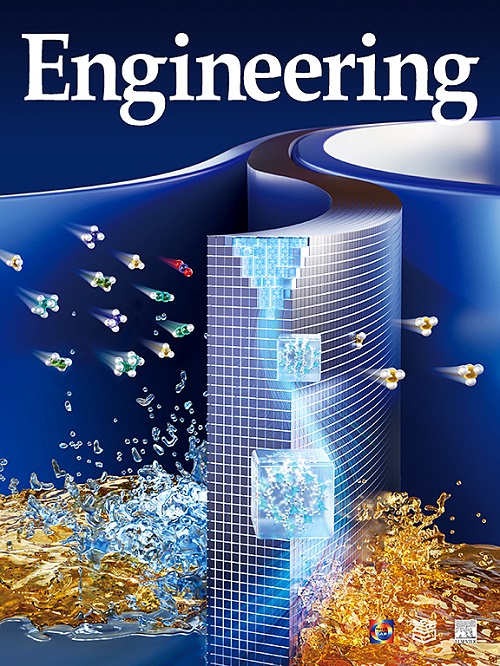在斑马鱼模型筛选中发现高效天然霉菌毒素解毒剂,以对抗玉米赤霉烯酮诱导的毒性
IF 10.1
1区 工程技术
Q1 ENGINEERING, MULTIDISCIPLINARY
引用次数: 0
摘要
玉米赤霉烯酮(ZEA)是一种霉菌毒素,对全球人类和动物健康构成重大危害。天然产品(NPs)具有多种功能活性,因此有望减轻玉米赤霉烯酮的不良影响。然而,目前的挑战在于缺乏一种有效的策略来系统地筛选和鉴定能够有效防止 ZEA 引起的毒性的 NPs。本研究介绍了一种基于表型的筛选策略,用于筛选 NP 库和发现更有效的化合物,以减轻或抵消动物暴露于 ZEA 的不良后果。利用这一策略,我们初步鉴定了 96 种 NPs,并使用评分系统和 TCMacro 方法,根据胚胎表型和运动活性评估了两种有效候选化合物 fraxetin 和 hydroxytyrosol 的效力和功效。此外,我们还进行了转录组和蛋白质-蛋白质相互作用(PPI)网络分析,以提取两种mRNA特征,从而查询连接图(CMap)数据库并预测NPs。预测出的 NPs 有可能逆转与 ZEA 毒性相关的基因表达谱。因此,我们利用模型对这些化合物进行了进一步筛选,结果表明,糙皮素、水黄素和核黄素在斑马鱼体内具有良好的疗效。值得注意的是,在整个过程中,fraxetin 始终是最有前途的 NP。生物通路分析和功能验证显示,在极低剂量下,fraxetin 就能完全逆转 ZEA 的毒性效应。这是通过修复受损细胞的凋亡、改变细胞周期通路和防止衰老诱导实现的,显示出良好的应用潜力。总之,我们证明了这种整合策略可以成功应用于有效发现潜在的解毒剂。本文章由计算机程序翻译,如有差异,请以英文原文为准。
Revealing High-Efficiency Natural Mycotoxin Antidotes in Zebrafish Model Screening Against Zearalenone-Induced Toxicity
Zearalenone (ZEA), a mycotoxin, poses a significant global hazard to human and animal health. Natural products (NPs) have shown promise for mitigating the adverse effects of ZEA owing to their diverse functional activities. However, the current challenge lies in the absence of an efficient strategy for systematic screening and identification of NPs that can effectively protect against ZEA-induced toxicity. This study describes a phenotype-based screening strategy for screening NP libraries and discovering more effective compounds to mitigate or counteract the adverse consequences of ZEA exposure in animals. Using this strategy, we initially identified 96 NPs and evaluated the potency and efficacy of two effective candidate compounds, fraxetin, and hydroxytyrosol, based on embryonic phenotype and locomotor activity using a scoring system and the TCMacro method. Furthermore, we performed transcriptome and protein−protein interaction (PPI) network analyses to extract two mRNA signatures to query the Connectivity Map (CMap) database and predict NPs. The predicted NPs showed the potential to reverse the gene expression profiles associated with ZEA toxicity. Consequently, we further screened these compounds using our model, which indicated that hispidin, daphnetin, and riboflavin exhibit promising in vivo efficacy in zebrafish. Notably, throughout the process, fraxetin consistently stood out as the most promising NP. Biological pathway analysis and functional verification revealed that fraxetin completely reversed the toxic effects of ZEA at very low doses. This was achieved by repairing damaged cell apoptosis, modifying the cell cycle pathway, and preventing senescence induction, indicating good application potential. Overall, we demonstrated that this integration strategy can be successfully applied to effectively discover potential antidotes.
求助全文
通过发布文献求助,成功后即可免费获取论文全文。
去求助
来源期刊

Engineering
Environmental Science-Environmental Engineering
自引率
1.60%
发文量
335
审稿时长
35 days
期刊介绍:
Engineering, an international open-access journal initiated by the Chinese Academy of Engineering (CAE) in 2015, serves as a distinguished platform for disseminating cutting-edge advancements in engineering R&D, sharing major research outputs, and highlighting key achievements worldwide. The journal's objectives encompass reporting progress in engineering science, fostering discussions on hot topics, addressing areas of interest, challenges, and prospects in engineering development, while considering human and environmental well-being and ethics in engineering. It aims to inspire breakthroughs and innovations with profound economic and social significance, propelling them to advanced international standards and transforming them into a new productive force. Ultimately, this endeavor seeks to bring about positive changes globally, benefit humanity, and shape a new future.
 求助内容:
求助内容: 应助结果提醒方式:
应助结果提醒方式:


